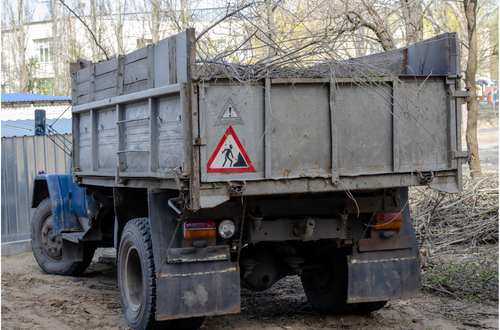Risk Aversion and New Safety Requirements

There was an interesting discussion from the pages on LinkedIn (now deleted) about politics and safety. I posted this perhaps controversial reply…
_____________.
Here is an example (not from the UK) that points to the issue …
An owner of a small (two-truck) hauling firm was cleaning up debris (leftover wood, plywood, drywall, block, and other building materials) from a construction site. He had hired three Mexican-American workers to help. They spoke little English.
They were loading the materials (which he planned to “recycle”) onto a skid loader. The skid loader then transported them to the dump truck and lifted them up to the top edge of the truck’s sides so they could unload and stack the various materials in the back of the dump truck.
As the truck was filled up, the workers walked on the materials which were uneven. Eventually, the workers were above the level of the truck’s sides (about 8-10 feet in the air).
The owner loaded the last load into the truck, and two workers were in the truck working to unload it. The owner turned off the skid loader and left for a bathroom break in a nearby (just 10 feet away) port-a-potty.
While he was gone, one of the workers fell from the truck and hit his head on the ground (a concrete surface). He later died from his injuries.
No other worker or the supervisor saw how the worker came to fall from the truck. The worker never regained consciousness. No one knows exactly why he fell.
An investigation by a federal safety organization found that the company (the “owner”) should:
1) Perform a pre-job risk assessment and identify and mitigate all hazards.
2) Provide safety training for all employees in the language they understand (Spanish).
3) Provide equipment that does not require workers to unload loads on elevated surfaces (in the back of a dump truck).
While I agree that items 1 and 3 would have prevented this particular accident, they would also probably eliminate this company from doing the work because:
a) They only have two dump trucks – no flatbeds or lowboys.
b) They didn’t have any other way to unload the materials into their trucks without damaging the materials (which they planned to reuse).
So, they are asking the owner of two dump trucks to perform a risk assessment and decide if the risk of someone falling off a truck is worth the benefit of being able to reuse the excess construction materials.
Not to “talk down” about everyday people, but this is probably someone with minimal education (high school education) and lots of work experience who has scrapped together enough money to buy a dump truck … and then another …, a skid steer loader, and start doing work that is dirty, physical, and does not have a high profit margin. He doesn’t have a “safety staff,” and he doesn’t see loading a truck as a particularly hazardous assignment.
If he saw falling out of the truck as a hazard, he would probably have a mitigation strategy of telling the workers in English to “be careful.”
He is never going to pay for multilingual safety training on his profit margins. He can’t afford to rent special equipment to move excess construction materials.
So the question is:
Is loading a dump truck with excess construction materials by hand so hazardous that it should never be allowed?
If you say “Yes,” then you are the next example of “out-of-control” safety police.
The real problem is that we become more risk-averse as time passes. Things we did as kids are now “too hazardous” to be allowed.
I remember sitting on my grandpa’s lap & driving his car & driving the farm tractor when I was only 5 years old. When Brittany Spears did the same thing in her car, child protective authorities were called because it was seen as a form of child abuse.
Don’t get me wrong. I’m not in favor of killing employees/children. I’m not saying to ignore obvious safety hazards. I’m just pointing out the difficulty in providing a hazard-free workplace & not seeming like out-of-control safety police.
___________
What do you think? Leave a comment here.



